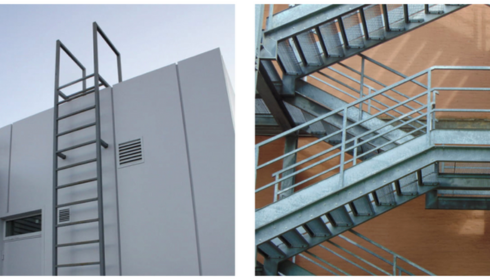Unveiling the Secrets of Wet-Barrel Hydrants: Where is the Valve Located?
In the realm of fire safety and emergency response, wet-barrel hydrants are unsung heroes, silently standing by, ready to spring into action when the need arises. These unassuming fixtures play a pivotal role in delivering a vital resource – water – to firefighters, helping them combat blazes and protect lives and property. However, understanding the inner workings of a wet-barrel hydrant, particularly the location of its valve, can be essential for effective firefighting and maintenance. In this comprehensive guide, we delve deep into the anatomy of wet-barrel hydrants, shedding light on the valve’s crucial location.
https://cognitivemagazine.com/where-is-apple-cider-vinegar-in-the-grocery-store-a-comprehensive-guide/
https://cognitivemagazine.com/where-is-apple-cider-in-the-grocery-store-a-comprehensive-guide/
https://cognitivemagazine.com/discovering-antakya-a-gem-on-the-map-of-turkey/
The Core Components of a Wet-Barrel Hydrant
Before we explore the location of the valve, let’s familiarize ourselves with the key components of a wet-barrel hydrant. These hydrants are typically found on street corners, in public spaces, and even on private properties. They consist of several integral parts, each serving a specific purpose:
1. Hydrant Barrel
The main body of the hydrant, the barrel, houses the critical components necessary for its operation. It is a cylindrical structure, often painted in a distinctive color for easy identification.
2. Bonnet
At the top of the hydrant barrel sits the bonnet, a protective covering that shields the internal mechanisms from weather and environmental factors. The bonnet is typically fitted with a cap that can be removed when needed.
3. Nozzle
The nozzle is the point where hoses are attached for water distribution. Firefighters connect their hoses to the nozzle to access the water supply. It plays a crucial role in directing the flow of water.
4. Operating Nut
The operating nut, often adorned with a pentagon-shaped or square head, is a key element for controlling the hydrant’s functions. It is used to open or close the hydrant and control the flow of water.
5. Valve Stem
The valve stem extends down from the operating nut into the hydrant barrel, connecting to the valve at the bottom. This component facilitates the opening and closing of the hydrant’s valve.
6. Drain Valve
Positioned at the base of the hydrant, the drain valve allows for the release of residual water, preventing freezing during cold weather. It also aids in maintenance and inspection.
Locating the Valve: The Heart of the Hydrant
Now that we have a clear understanding of the core components, let’s zero in on the valve, which is undoubtedly the heart of the wet-barrel hydrant. The valve is responsible for controlling the flow of water, making it a critical element for firefighting operations. So, where exactly is the valve located?
Valve Location
The valve in a wet-barrel hydrant is typically located at the base of the hydrant barrel, precisely where the barrel meets the ground. This strategic positioning ensures that the valve remains submerged in the ground, protecting it from freezing temperatures during winter.
The valve is designed to be accessed and controlled using the operating nut located above ground level. Firefighters or maintenance personnel can use a special hydrant wrench to turn the operating nut, which, in turn, opens or closes the valve. This mechanism allows for swift and efficient water flow control during firefighting operations.
Importance of Valve Location
Understanding the valve’s location is of paramount importance for firefighters and emergency responders. In the chaos of a fire emergency, every second counts, and quick access to water can make a significant difference in containing and extinguishing the flames.
By having the valve located at ground level, wet-barrel hydrants ensure that firefighters can swiftly connect hoses and initiate water flow without the need for extensive digging or excavation. This design feature streamlines the firefighting process, saving precious time and minimizing potential property damage.
Proper Maintenance and Inspection
In addition to knowing the valve’s location, it is crucial to emphasize the importance of regular maintenance and inspection of wet-barrel hydrants. These proactive measures can ensure that the hydrants function optimally when needed most.
Maintenance Tips
- Regular Lubrication: Periodically lubricate the operating nut and valve stem to prevent rust and ensure smooth operation.
- Painting: Maintain the hydrant’s distinct color for easy visibility, and touch up any chipped or faded paint.
- Annual Inspection: Conduct an annual inspection to identify and address any issues promptly.
In conclusion, wet-barrel hydrants are vital components of urban infrastructure, providing essential support to firefighting efforts. Understanding the location of the valve, positioned at the base of the hydrant barrel, is essential for efficient water flow control during emergencies. By grasping the inner workings of these hydrants and emphasizing regular maintenance, we can ensure that they continue to play their crucial role in safeguarding lives and property.
Also Read:
https://cognitivemagazine.com/unveiling-the-wonders-of-bibabi-exploring-its-origins-and-allure/
https://cognitivemagazine.com/amber-fiedler-2022-a-comprehensive-look-into-her-journey-and-achievements/
https://cognitivemagazine.com/unlocking-the-charm-of-amanda-from-incredible-tiny-homes/













Post Comment
You must be logged in to post a comment.